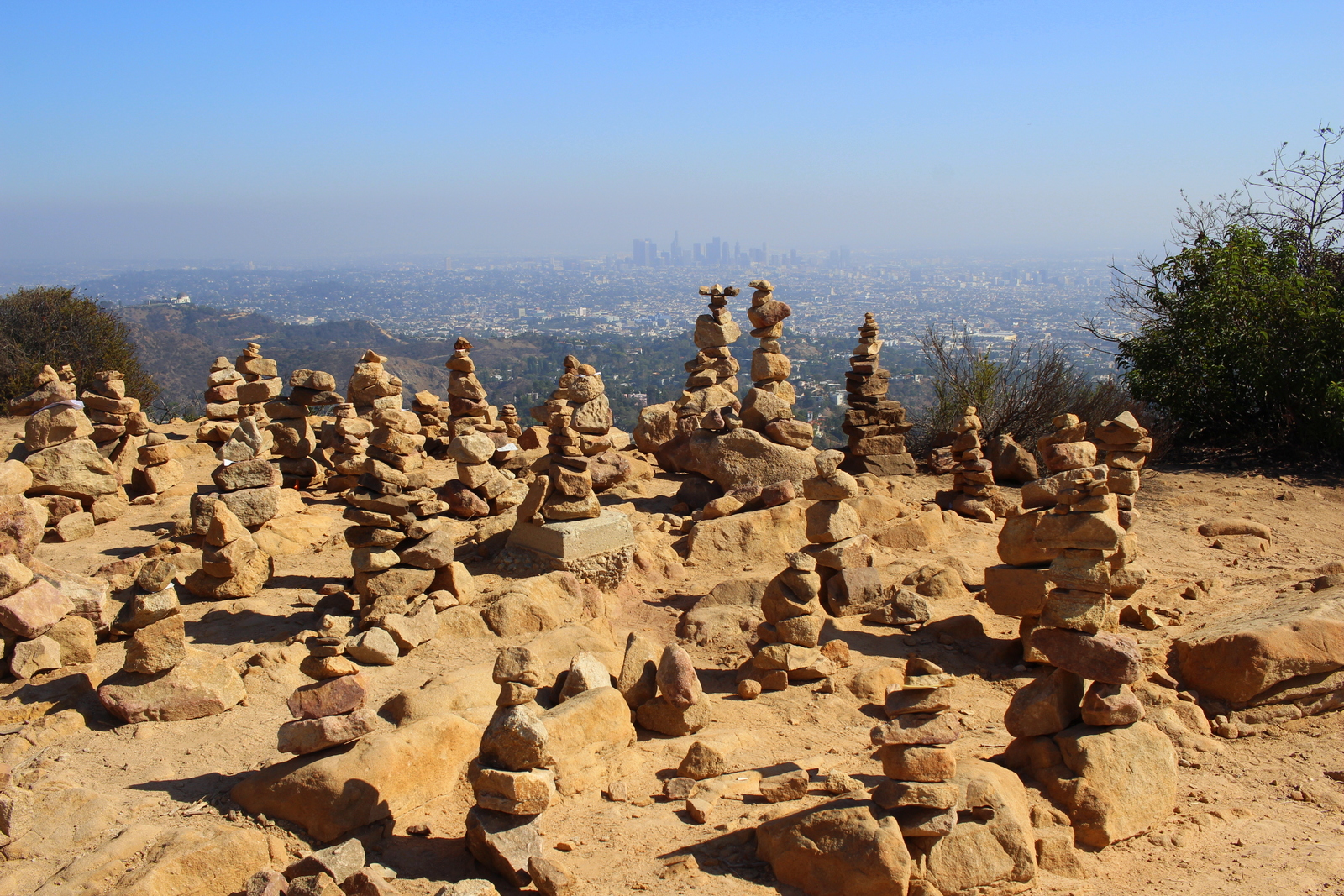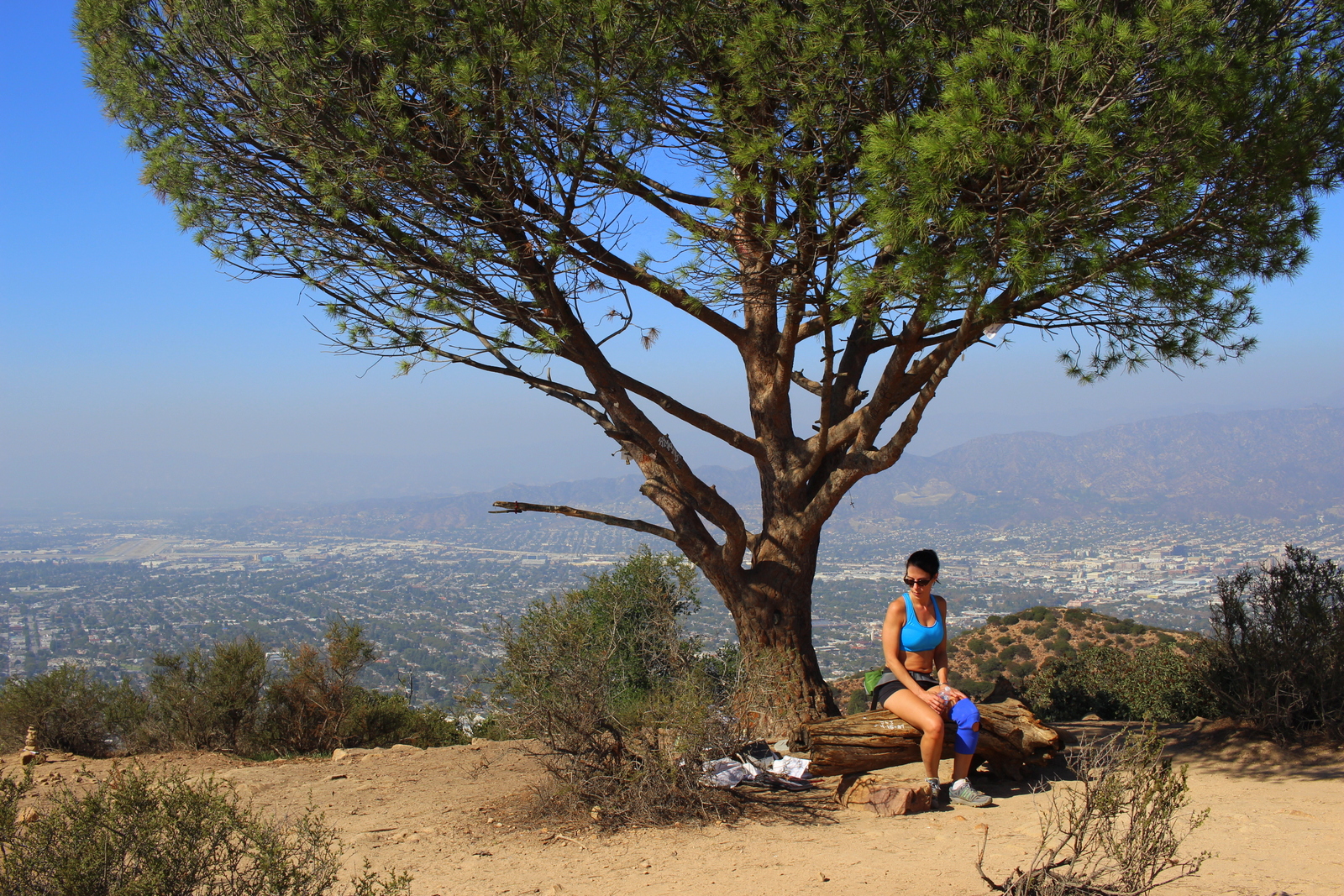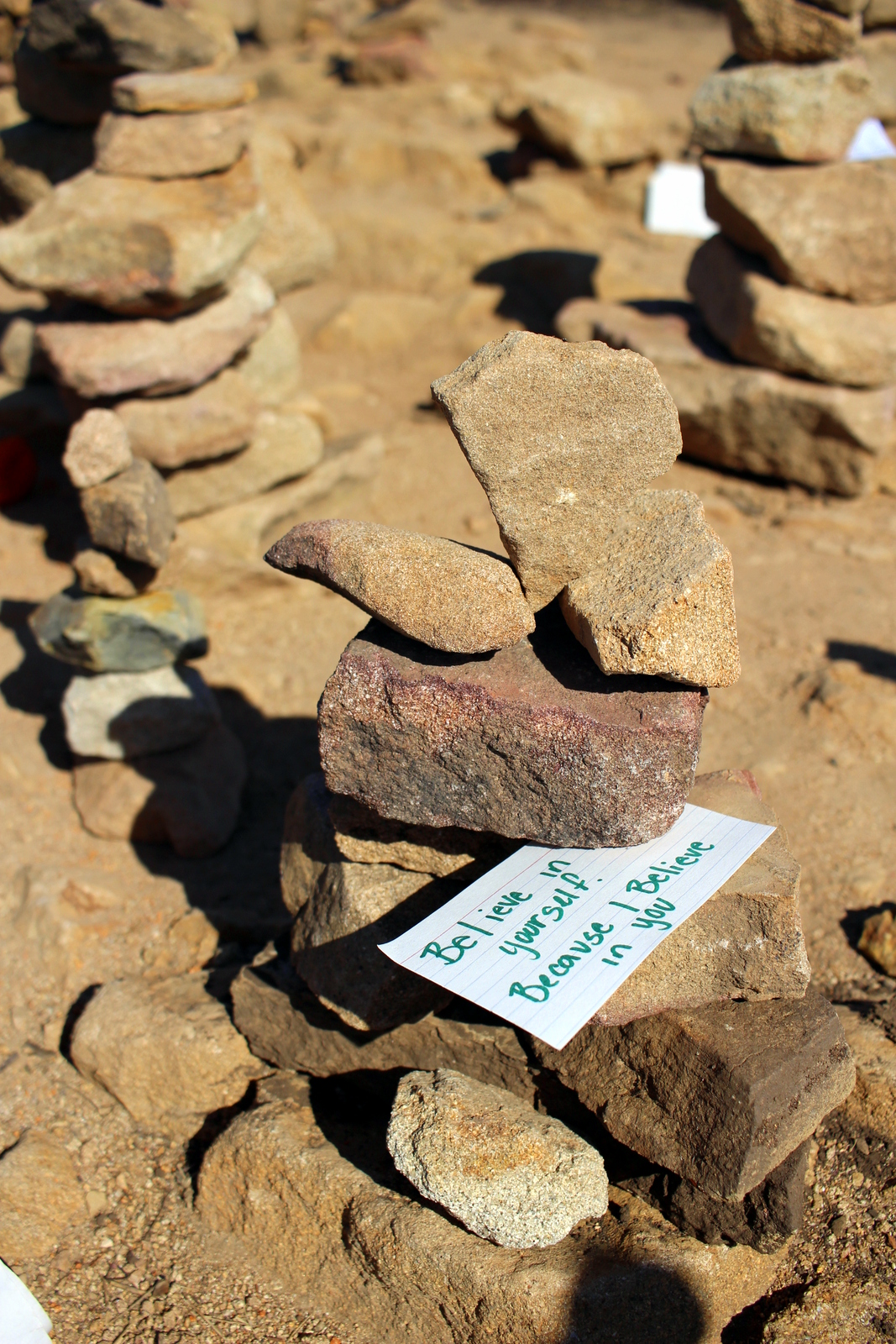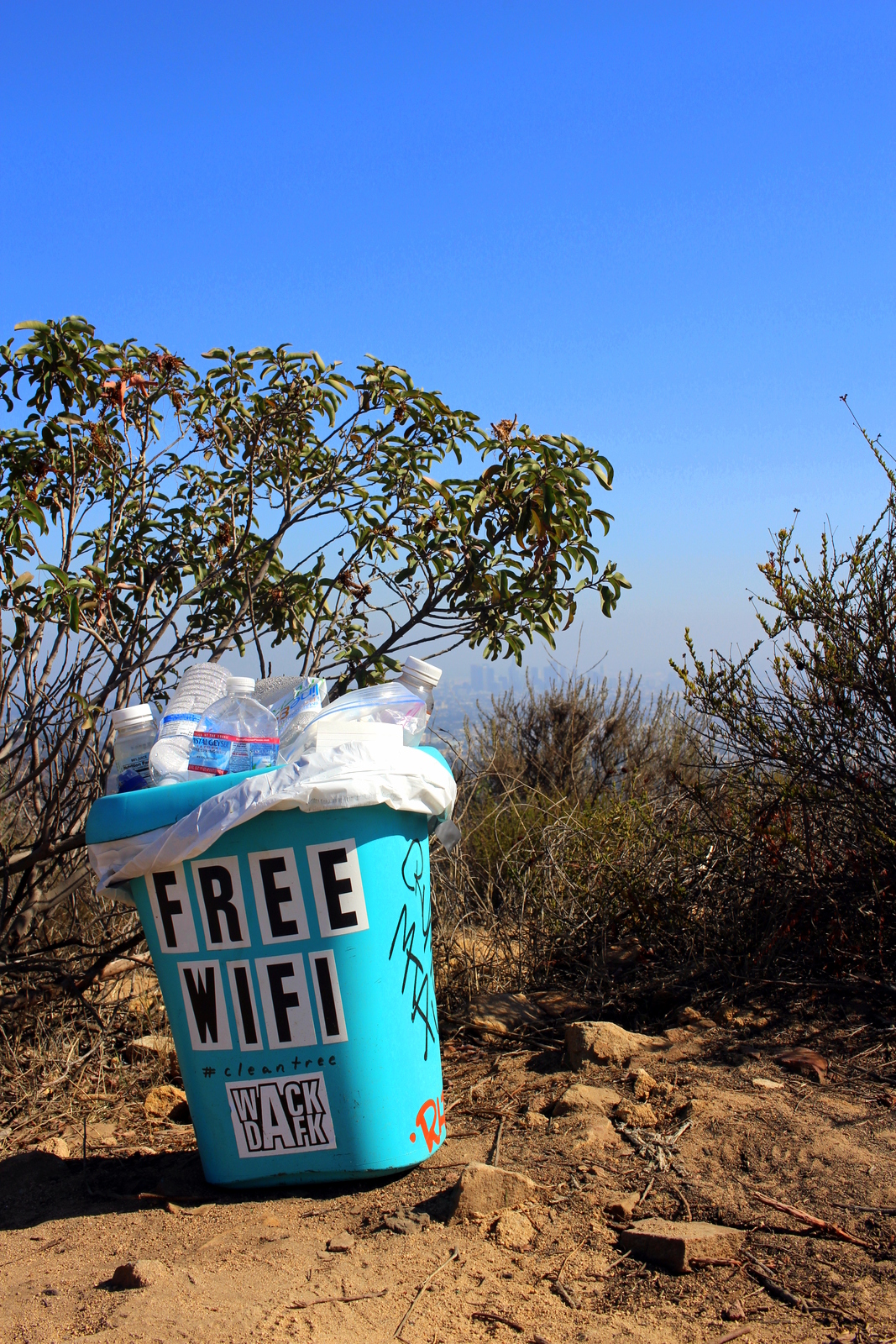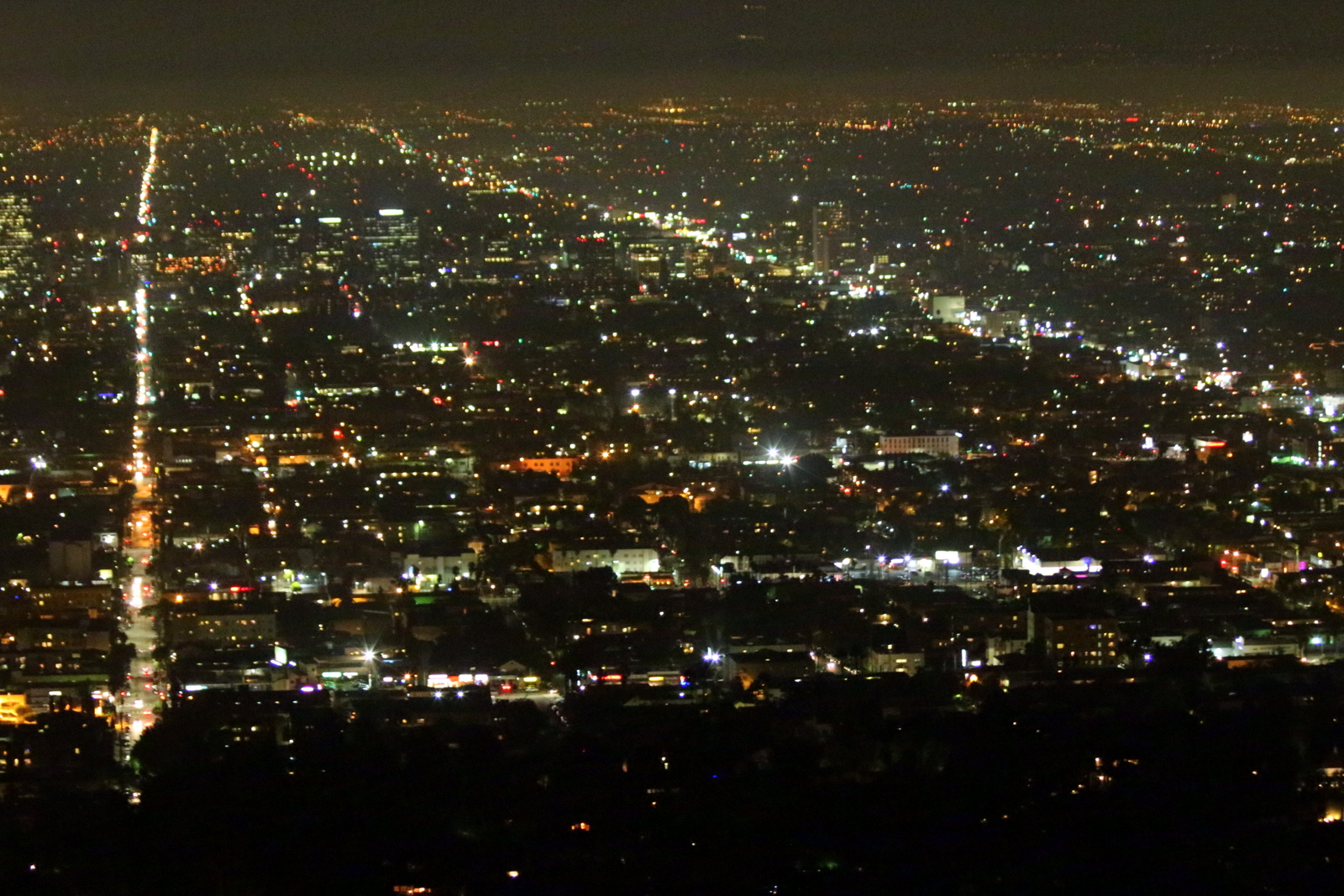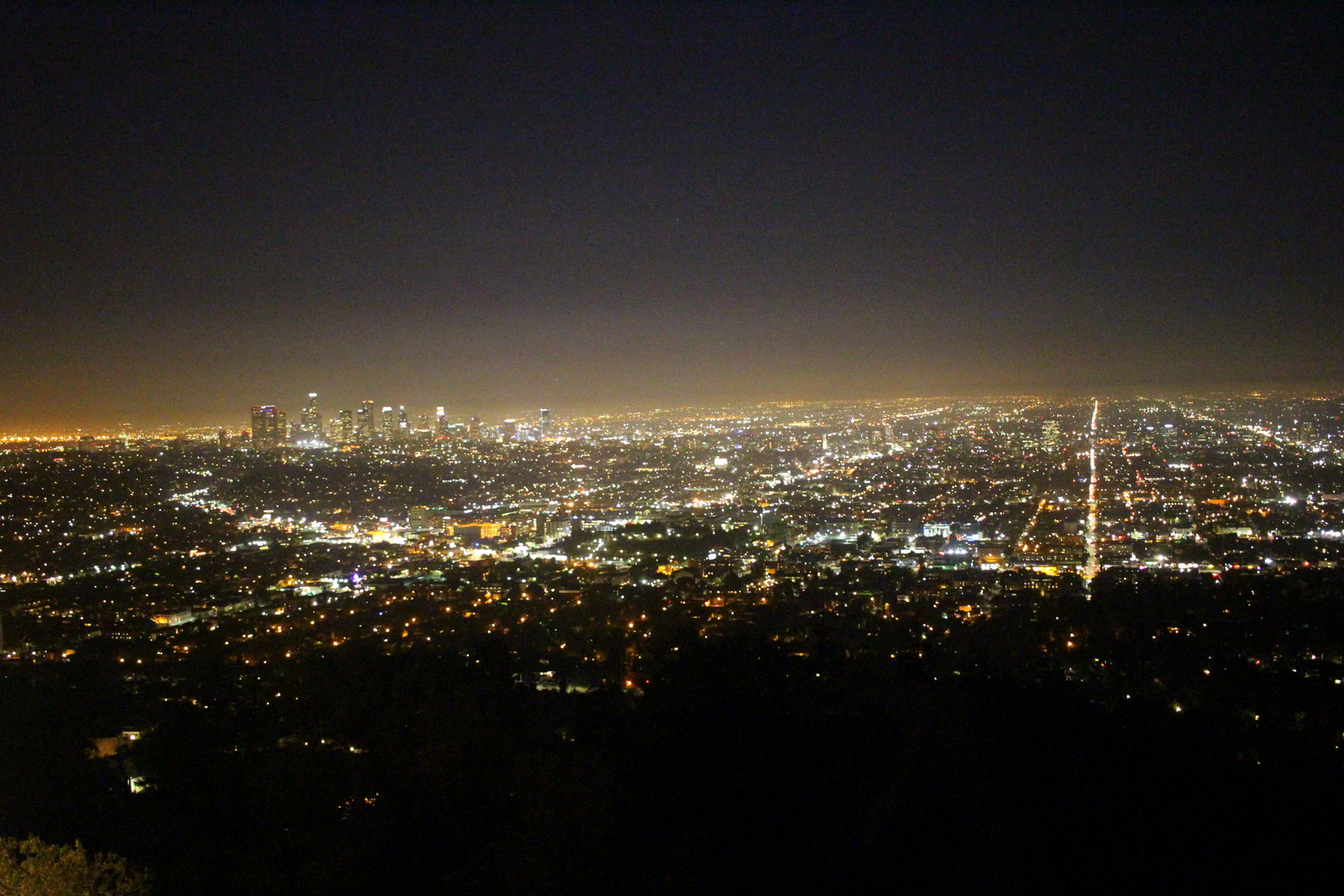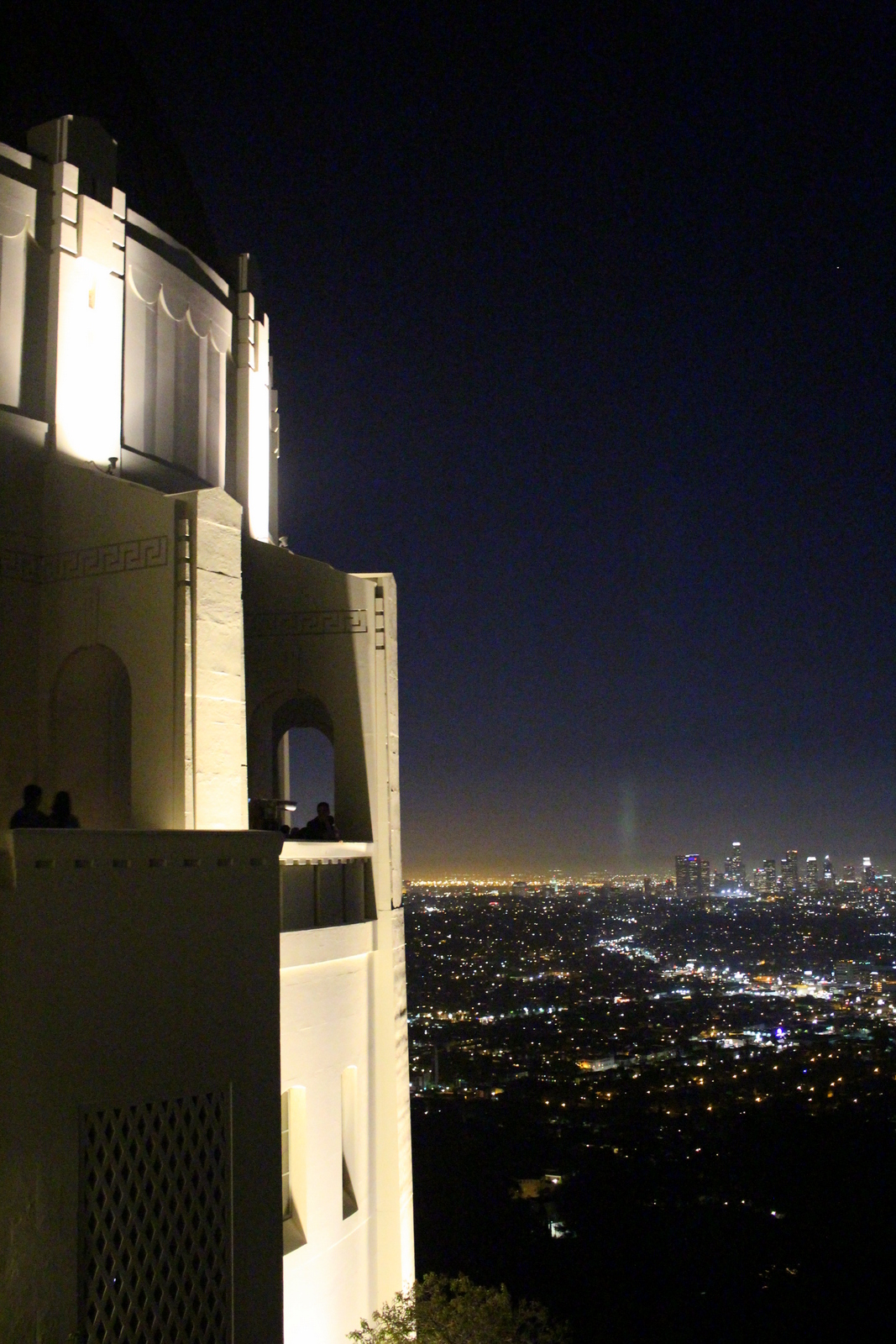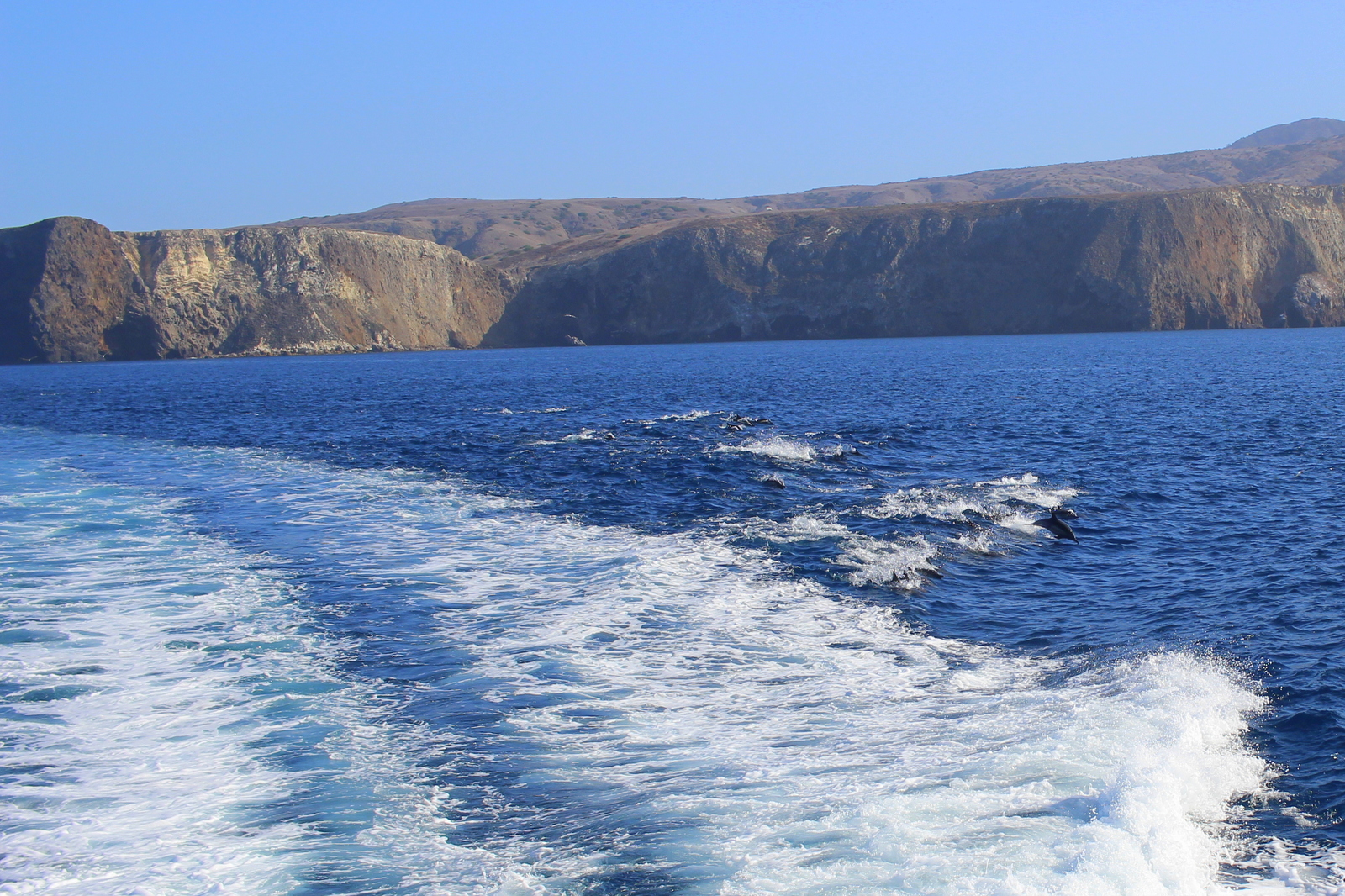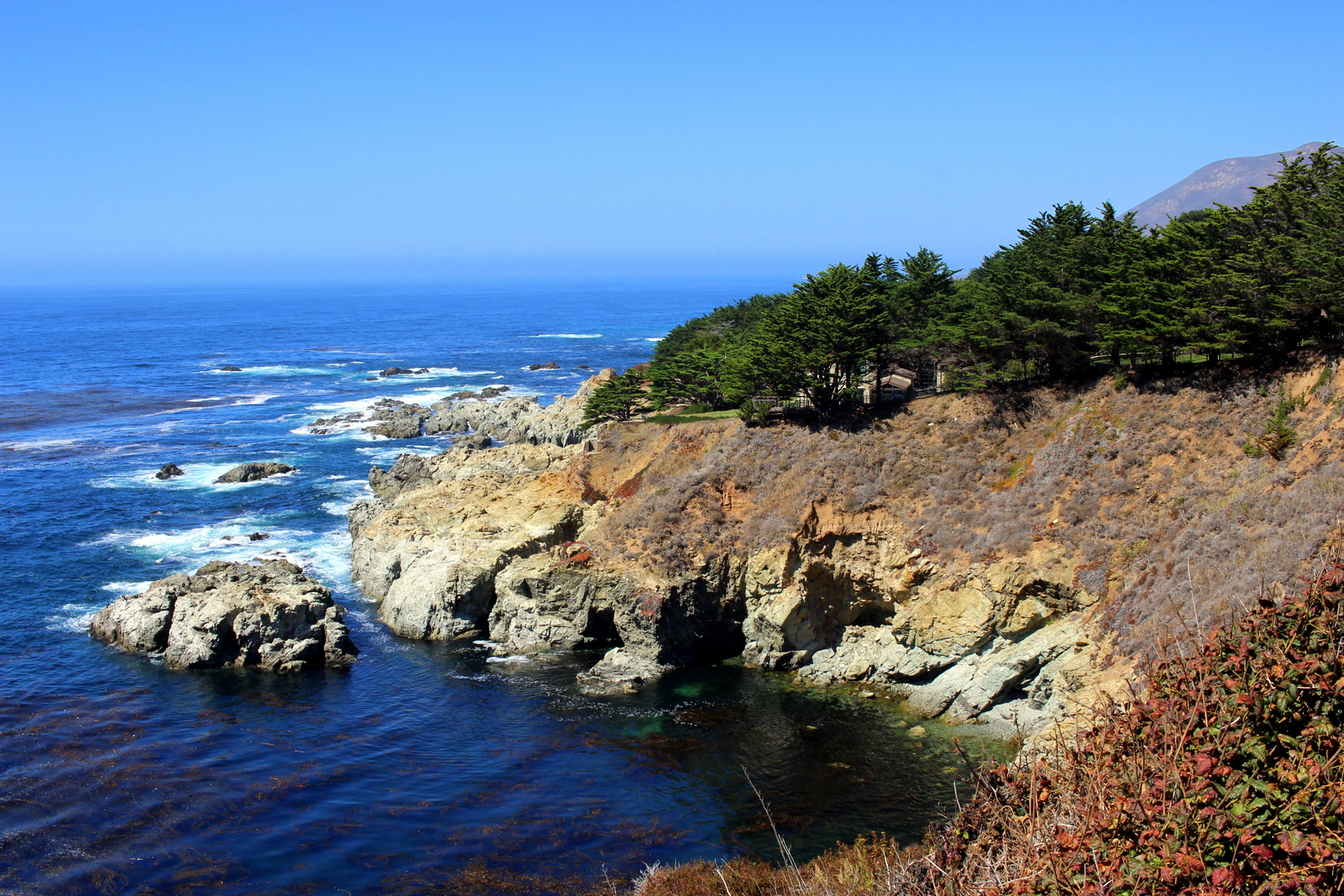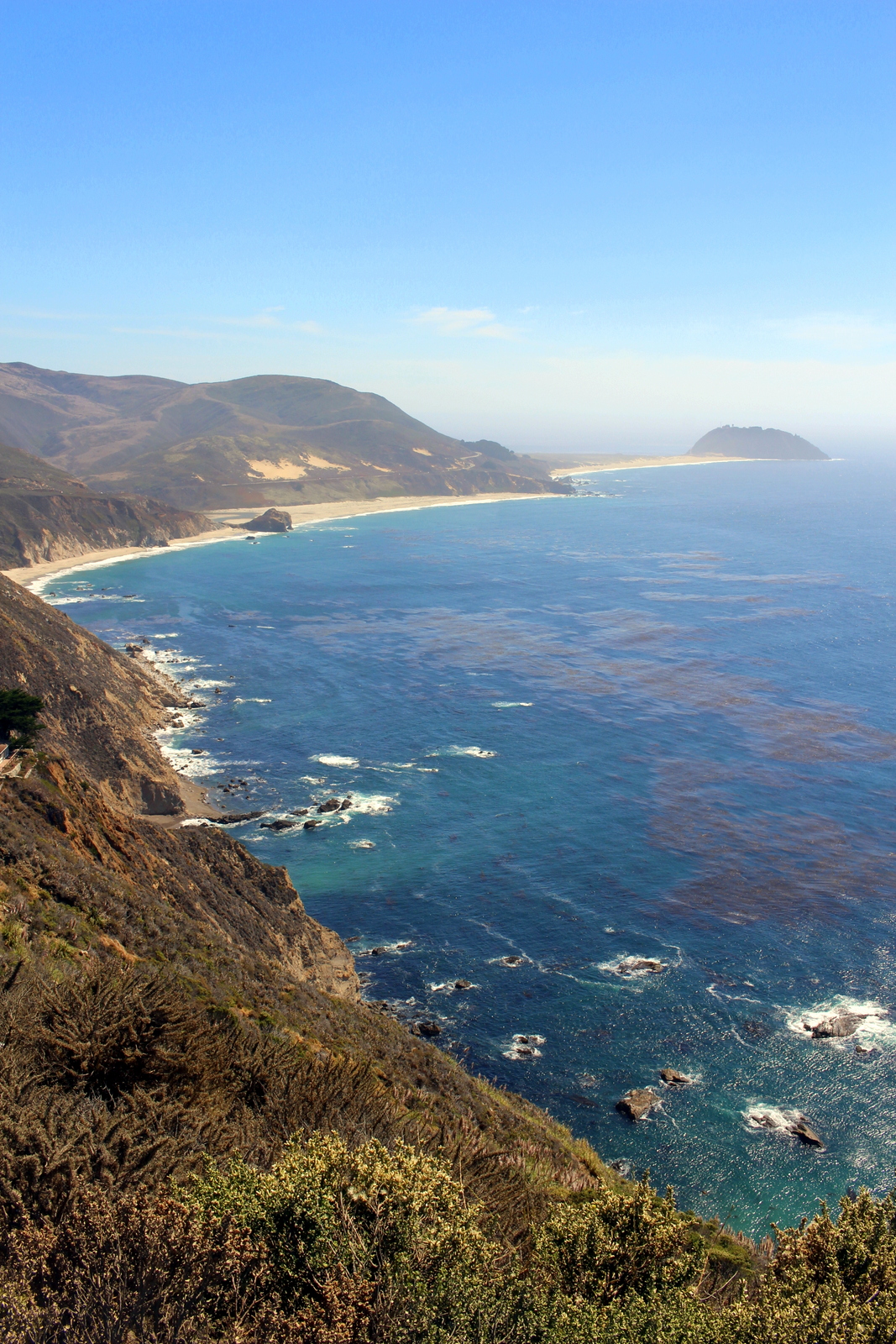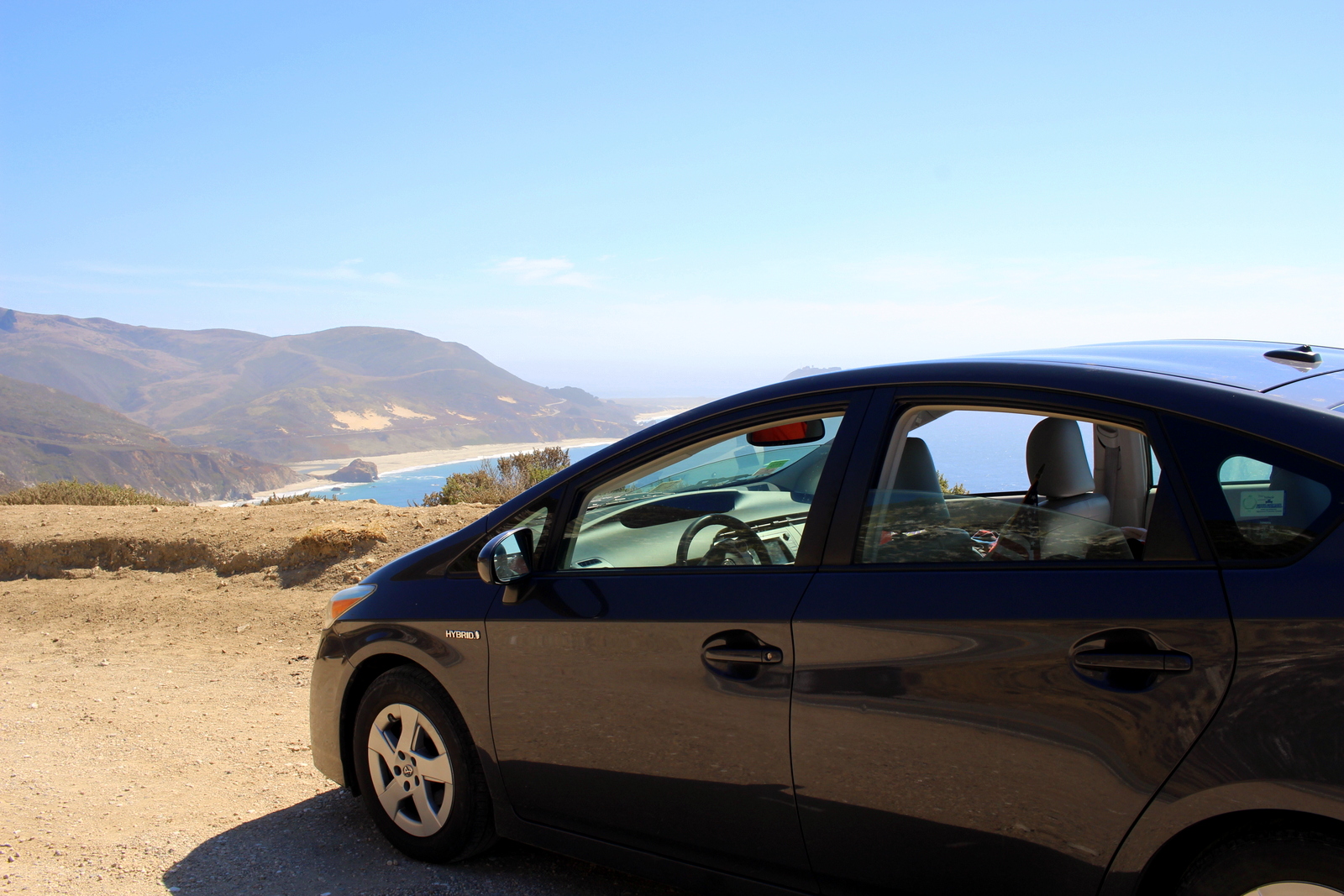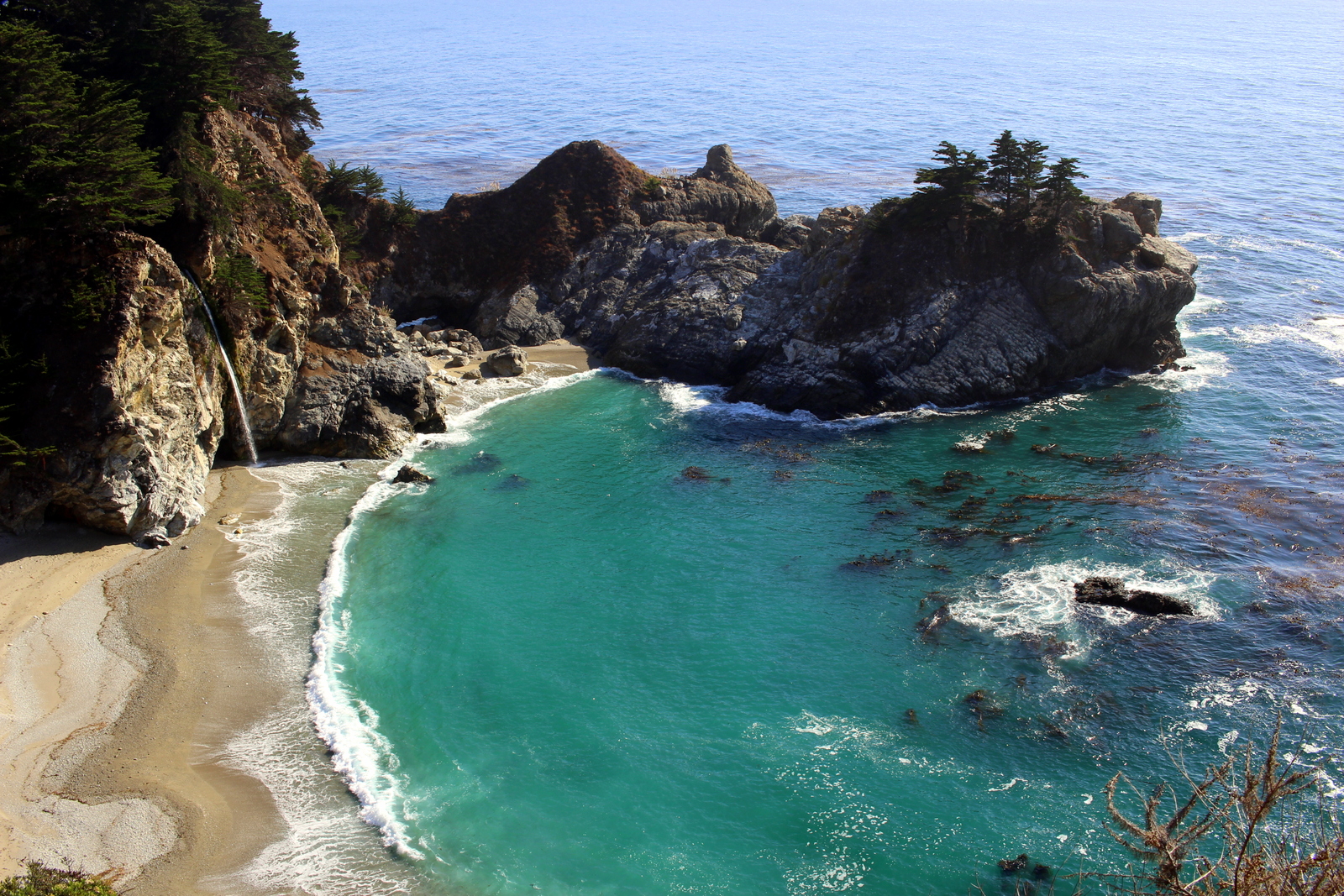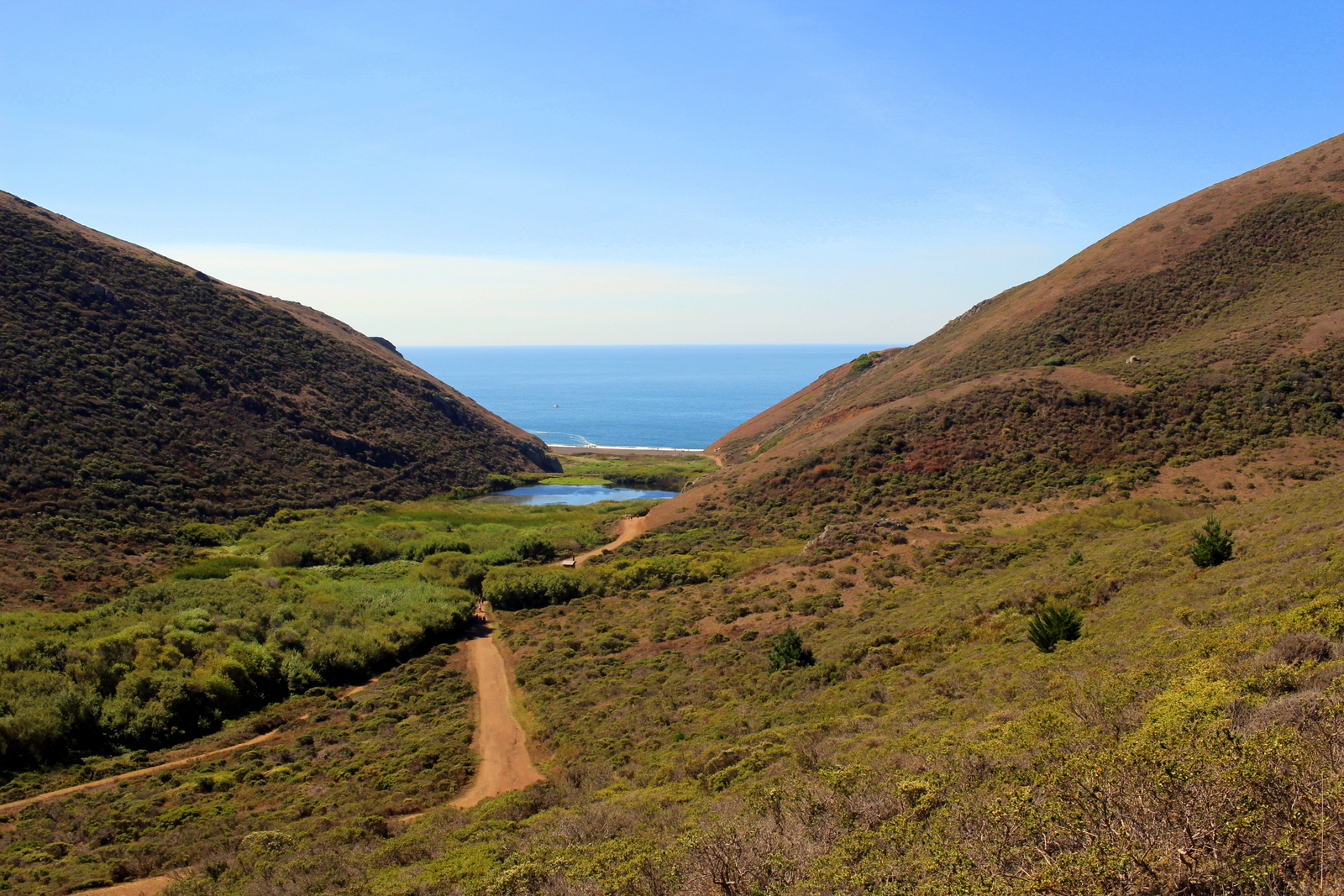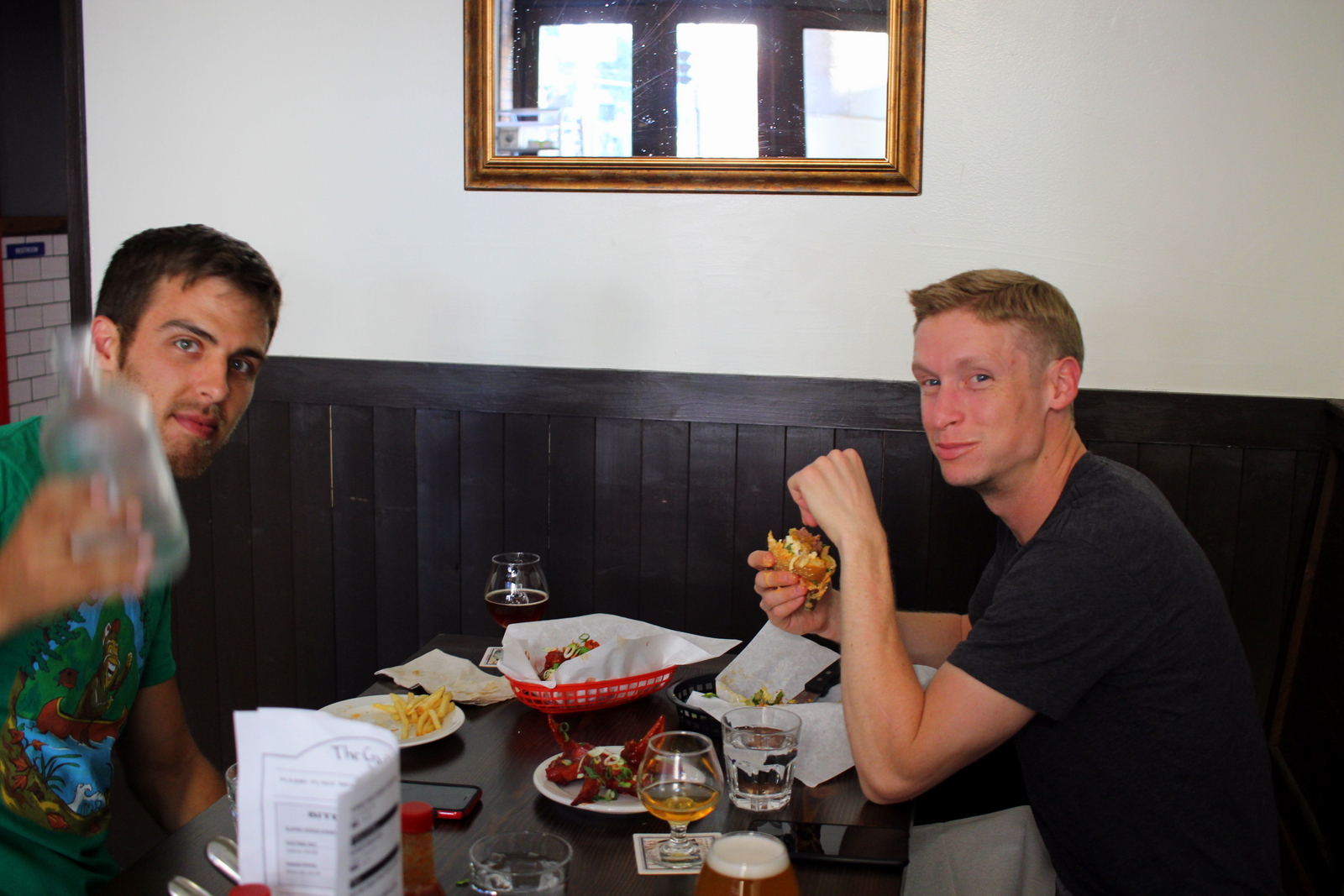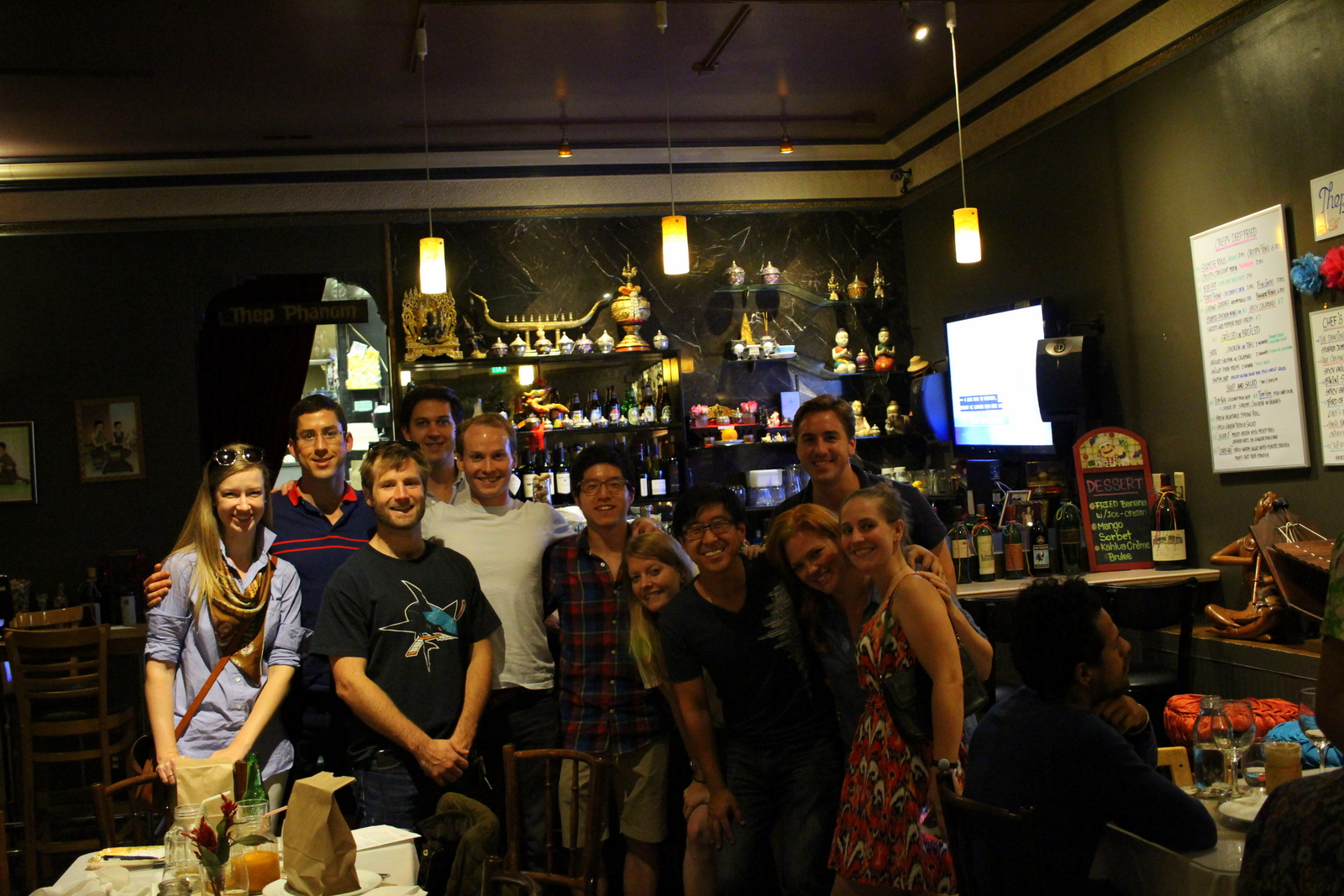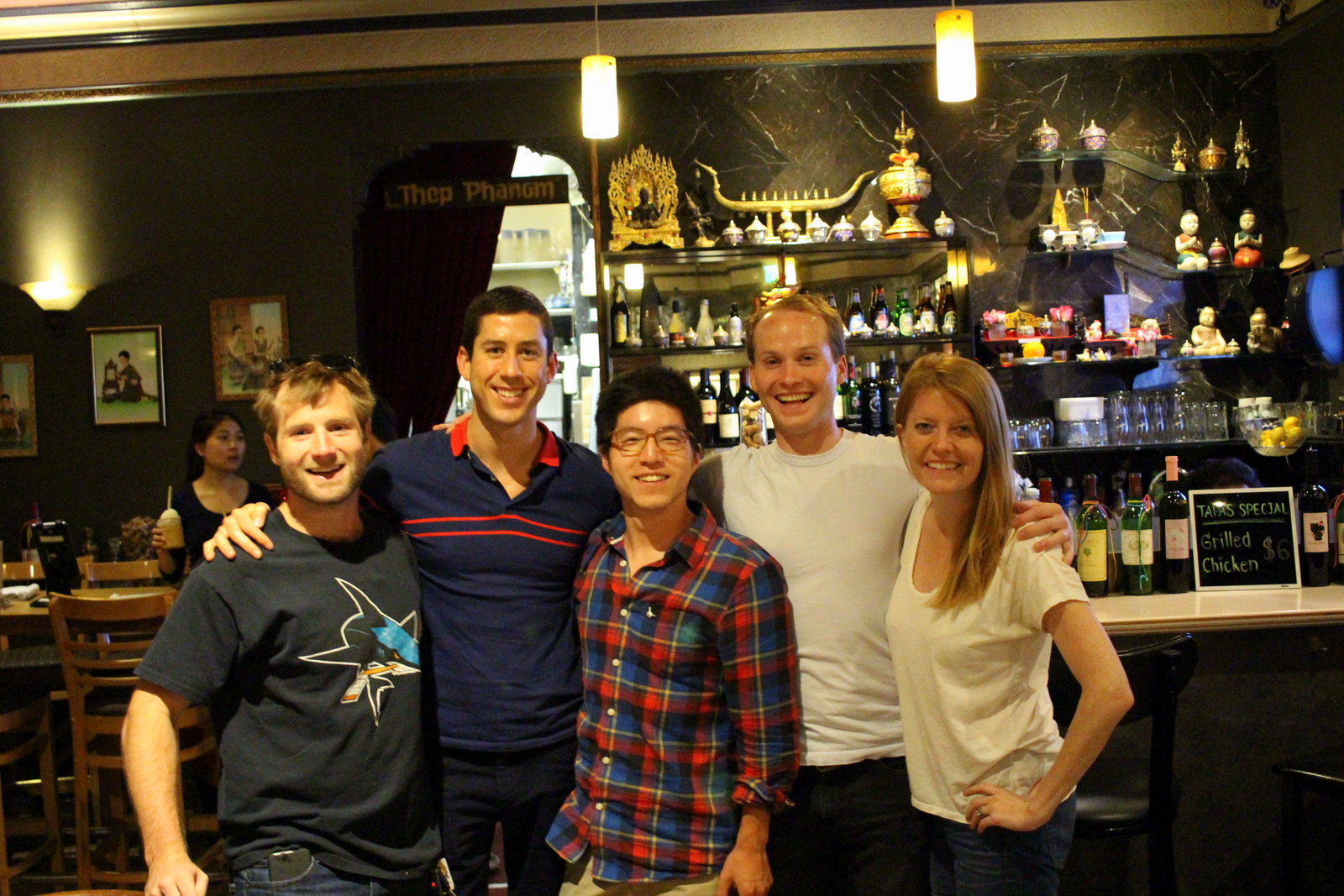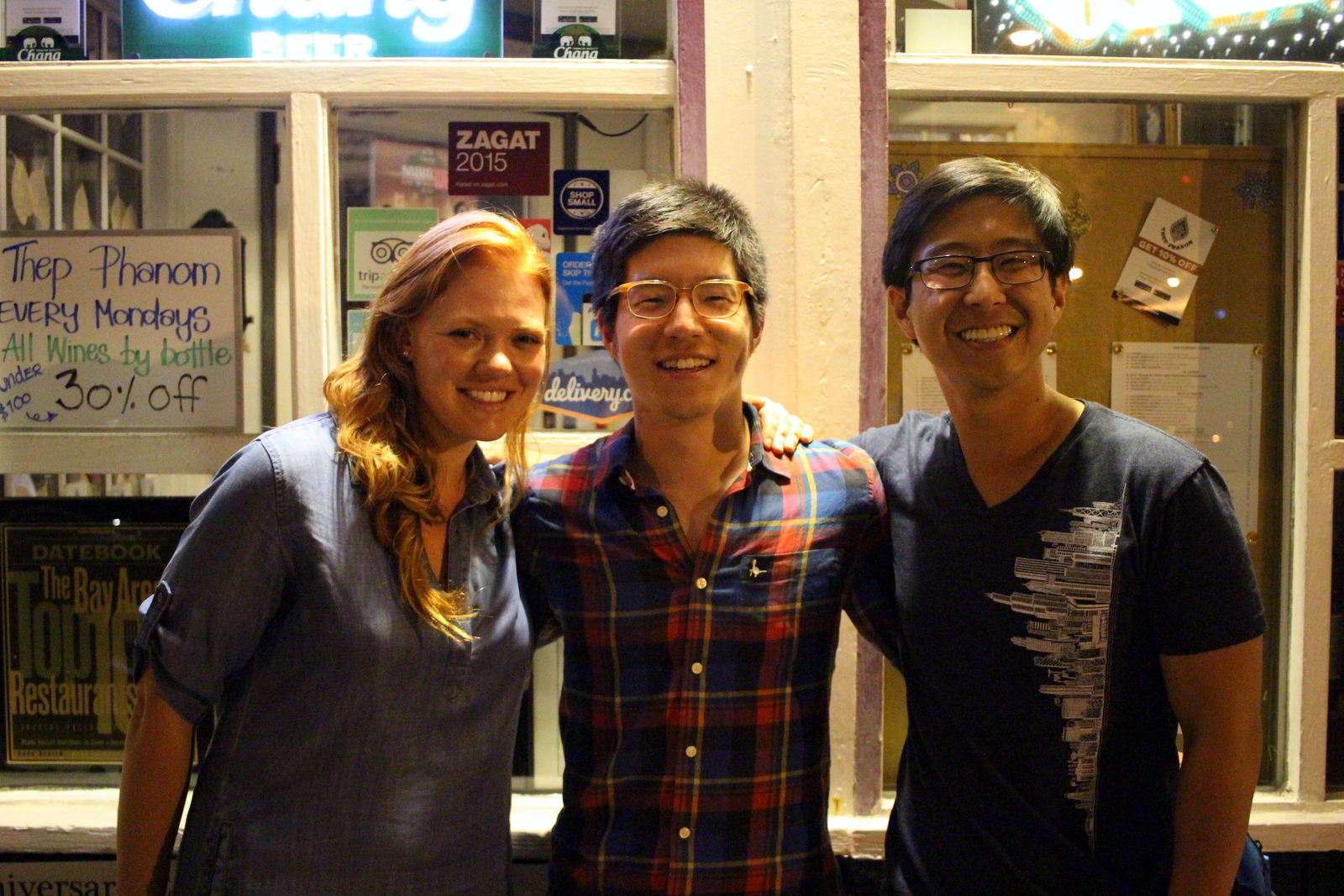Normally, what follows would be merged with the rest of the day's post, but this morning was so spectacular that I decided I'd write separately about the first 45 minutes of my day.
The previous night, I'd narrowly avoided either being stranded on top of a pile of rocks or falling off a cliff and badly hurting myself. This morning, I was ready to catch the sunrise from the same perch.
At 5:30 a.m., I was up and out of my tent. After using the bathroom and getting my camera gear ready, I made my way back up to the top of the rocks. I made it to the top at 5:59, and this was my first view of the campground.
6:00 a.m.
Official sunrise was not for another 15 minutes or so, so I scanned the area as my eyes adjusted to the dark. As the sky continued to turn colors, I noticed a strange cloud formation on the horizon. It looked like a mini-tornado.
6:06 a.m.
As the minutes ticked away, different parts of the tornado turned orange.
6:11 a.m.
At some point, a plane started creating a streak across the sky that was on a collision course with the tornado.
6:15 a.m.
It was kind of surreal to see these formations against the landscape.
The campground was still dark at this point, but the horizon showed the hills with differing levels of faintness.
6:19 a.m.
By now, others had joined the party. All around me, people were clambering up rocks to their respective viewpoints.
6:21 a.m.
6:22 a.m.
The plane eventually made it way past the tornado. It truly looked like some form of abstract art in the sky.
6:24 a.m.
Looking away from the east, the clouds were a different color. Still beautiful.
6:25 a.m.
Official sunrise was just a few minutes away. The last of the sunrise watchers clambered up to their perches.
6:26 a.m.
And at 6:29, I saw something incredible. The horizon started glowing fiery red. Had I not known that the sun was rising, I would've thought an atomic bomb had just been dropped over there.
6:29 a.m.
The camera didn't actually capture what I was seeing. It was a bright red spot glowing in the middle of on orange horizon. Truly incredible. I zoomed in on the epicenter. And I also looked at the horizon from a wide angle. Truly, these photos don't capture how bright the red glow was.
One upside to the smog is that it makes it easy to gauge distances. The succeeding layers of mountains grow fainter and fainter. I caught sight of a bird flying across, and managed to capture it against the hazy hills.
6:31 a.m.
Within minutes, I could sense that the sun was about to peek over the hilltop. That section of the horizon was glowing a fiery red.
6:32 a.m.
Finally, the top edge of the sun poked out. It is amazing how quickly the sun moved in the span of 60 seconds.
6:34:01 a.m.
6:34:22 a.m.
6:34:51 a.m.
I think sunrises have been the favorite part of the day for me on this trip. I love being surrounded by darkness and then having the world light up around me. And the peace and solitude at this time of day is unparalleled. The sun continued its rapid ascent into the sky.
6:35:22 a.m.
6:35:49 a.m.
6:36:41 a.m.
Finally, by 6:37 a.m., the sun was entirely visible in the sky. I loved the way its glow shaded the hills.
6:37:04 a.m.
6:37:22 a.m.
The sun had not yet hit the campground. It was still quite dark.
6:38:30 a.m.
Now that the sun was completely up, I was ready to come down and eat. I really loved my perch way up above the rest of the Jumbo Rocks campground. It had taken some effort (and a huge scare) to get up here. But it was worth it.
As I was about to descend, the first rays shone across the area (my tent is the white and green one in the bottom-center).
As I made my way to the shallower side of the rock, I looked down and noticed a couple who'd opted to sleep outside, between two rocks, and under the stars. They looked very peaceful.
I got back down to my campsite. I looked up at my wonderful perch for that morning (and the previous evening). I thought to myself how amazing it was that a few dozen feet of vertical could change your entire perspective on the world.
I cooked a quick batch of Birch Benders pancakes (amazing, as always!), and hit the road. I had over 350 miles to drive to my next destination, Zion National Park, so I had no time to lose. As I descended out of Joshua Tree, I decided I'd pull over and take one last photo of the eponymous tree. Their area is dwindling, so who knows if future generations will have the opportunity to see these weird plant/tree hybrids.
And then I was on the open road again.
I took a detour into the Mojave National Preserve. What a landscape! Right in the middle was an abandoned railroad town, Kelso.
It was crazy to think that during World War Two, Kelso was a boomtown. But it really just shows how fragile our lives and our environments are, and how things can happen that are entirely unimaginable. I'm sure the people who came and lived in Kelso never would've imagined that it would become a shell in the desert.
And then I cruised--into Nevada, past Las Vegas, through Arizona, and into Utah--to Zion National Park.



















































































